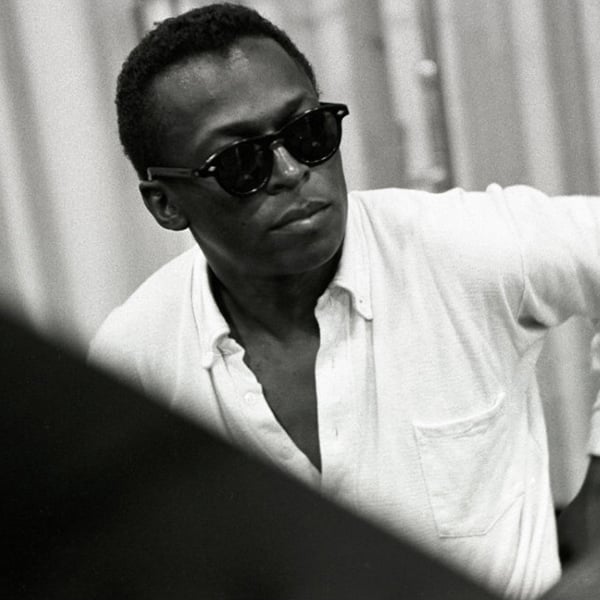
September 29, 1972 yielded one of those performances that could have only happened when it did. A year or two before, Miles’s fans—even Miles himself—were still absorbing the lessons brought on by Bitches Brew and all that followed; a year later, Miles was leading a band that pared down the Fusion explosion to a tight septet. The willful expansiveness—stylistically, sonically, instrumentally—that culminated with the groundbreaking studio album On The Corner, was only reflected onstage for a brief period. In Concert caught that moment: a full performance by Miles with a nonet at New York City’s Philharmonic Hall, playing to an enthusiastic crowd. The evening’s music was as electronic as it was electric—most players were outfitted with wah-wah pedals—and exotic as it is familiar: electric sitar alongside electric guitar and bass, synthesizer sounds as well as more sedate electric keyboards, tabla among more standard percussion.
The double album identified tracks simply—something called “Foot Fooler” on Sides A and B; “Slickaphonics” on C and D. In fact they were tunes taken from the fertile explosion that was 1970, including “Right Off,” “Honky Tonk” and “Theme from Jack Johnson” from the Jack Johnson studio dates; and “Rated X,” “Black Satin,” and “Ife” from later sessions. Many of the defining musicians from those dates are alongside Miles, including saxophonist Carlos Garnett, keyboardist Cedric Lawson, guitarist Reggie Lucas, sitarist Khalil Balakrishna, bassist Michael Henderson, and on drums, percussion, and tabla—Al Foster, Mtume, and Badal Roy.
There’s a marked freshness to the performances, a sense that things are still coalescing. On In Concert, some tunes hit the mark out of the gate, and plunge forward with abandon; others are less rushed, the band thinking things out as the tune gathers and reaches full force. It took time—technically and conceptually—to work out the balance of acoustic and amplified dynamics, clarity and distortion. One need only compare the way this evening in 1972 sounds to say, the sustained intensity of Agharta in 1975 to feel the difference a few years made.






